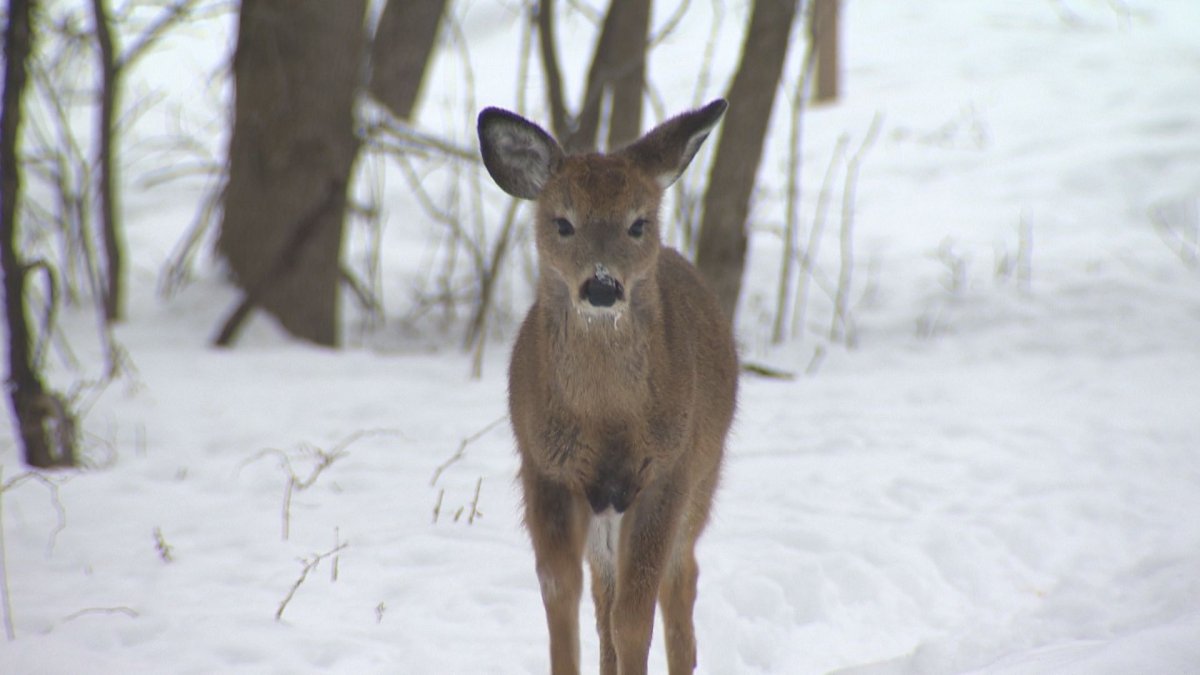February’s cold snap has people in Saskatchewan asking what the options are to help wildlife deal with severe winter conditions.

Officials with the Ministry of Environment say most species are resilient and able to survive the province’s winters.
However, they said animals may sometimes congregate in yards and communities in their efforts to find food and shelter.
Katherine Conkin, a wildlife biologist with the ministry, says the natural inclination for people when they see the animals in their communities is to put feed out for them to minimize damage to trees and shrubs.
She said it is not a great solution.
“Although winter-related starvation can occur, trying to help wildlife through supplemental feeding, or feeding programs, can end up causing these animals more harm than good,” Conkin said Tuesday in a statement.
“For example, when deer eat carbohydrate-rich food sources during the winter, such as grain or hay, they can die from a process known as rumen acidosis, or bloat.”
Conkin said supplemental feeding could have other consequences, such as drawing animals in from long distances and away from good winter cover.
- Life in the forest: How Stanley Park’s longest resident survived a changing landscape
- ‘Love at first sight’: Snow leopard at Toronto Zoo pregnant for 1st time
- Carbon rebate labelling in bank deposits fuelling confusion, minister says
- Buzz kill? Gen Z less interested in coffee than older Canadians, survey shows
She said it can also increase predation — the preying of one animal on another — and disease transmission.
“The ministry monitors annual winter conditions and adjusts species management strategies to ensure wildlife populations are sustainably managed over the long term,” Conkin said.
“Residents interested in helping Saskatchewan’s wildlife can participate in various conservation initiatives that preserve wildlife habitat. They can also participate in co-operative wildlife management surveys and remain engaged in wildlife management activities, such as the ministry’s annual hunter harvest survey.”
The ministry says people concerned about wildlife-related damage should visit the Saskatchewan Crop Insurance Corporation’s webpage for information on prevention techniques and compensation for damaged agriculture commodities.
All Saskatchewan producers are eligible for up to 100 per cent compensation on damage caused by wildlife under the wildlife damage compensation program.



Comments